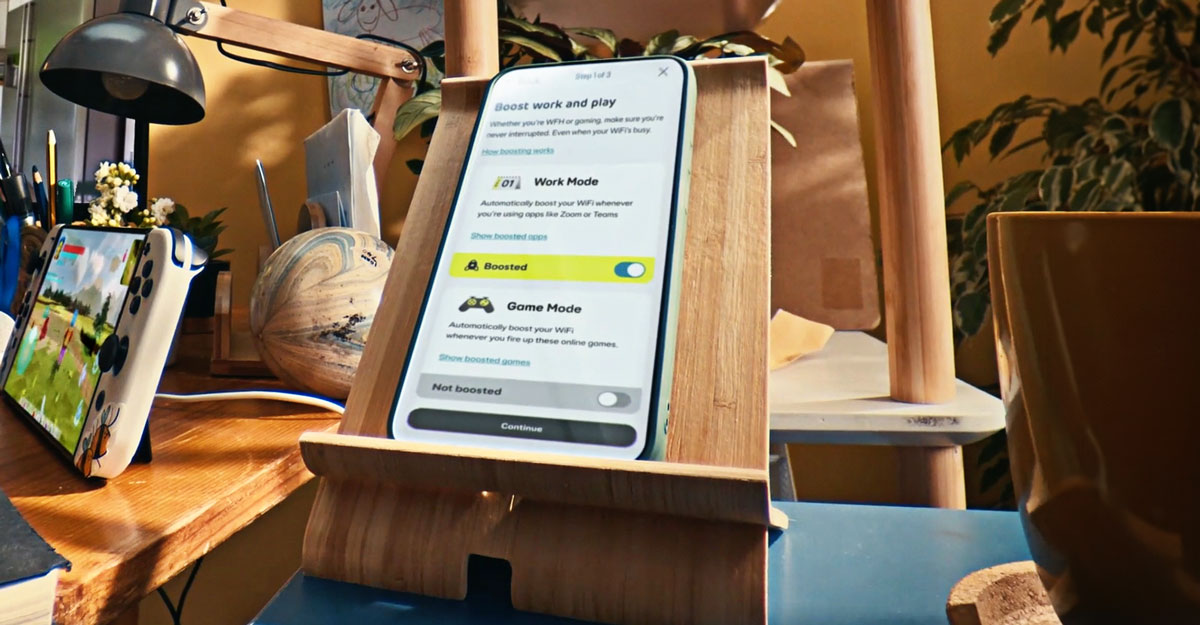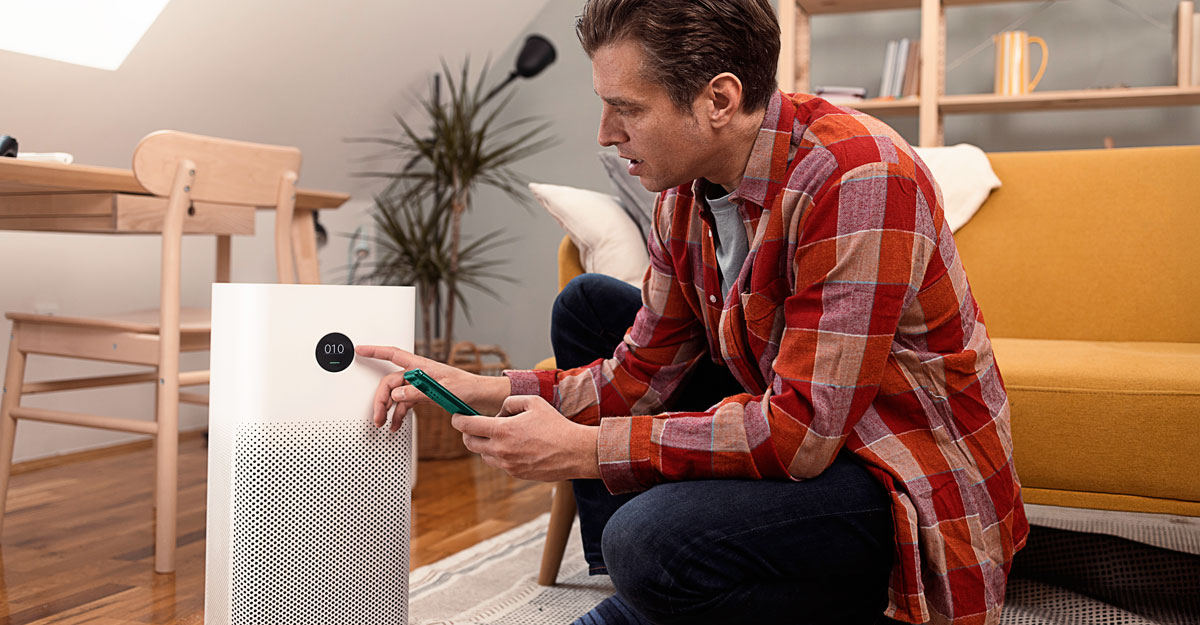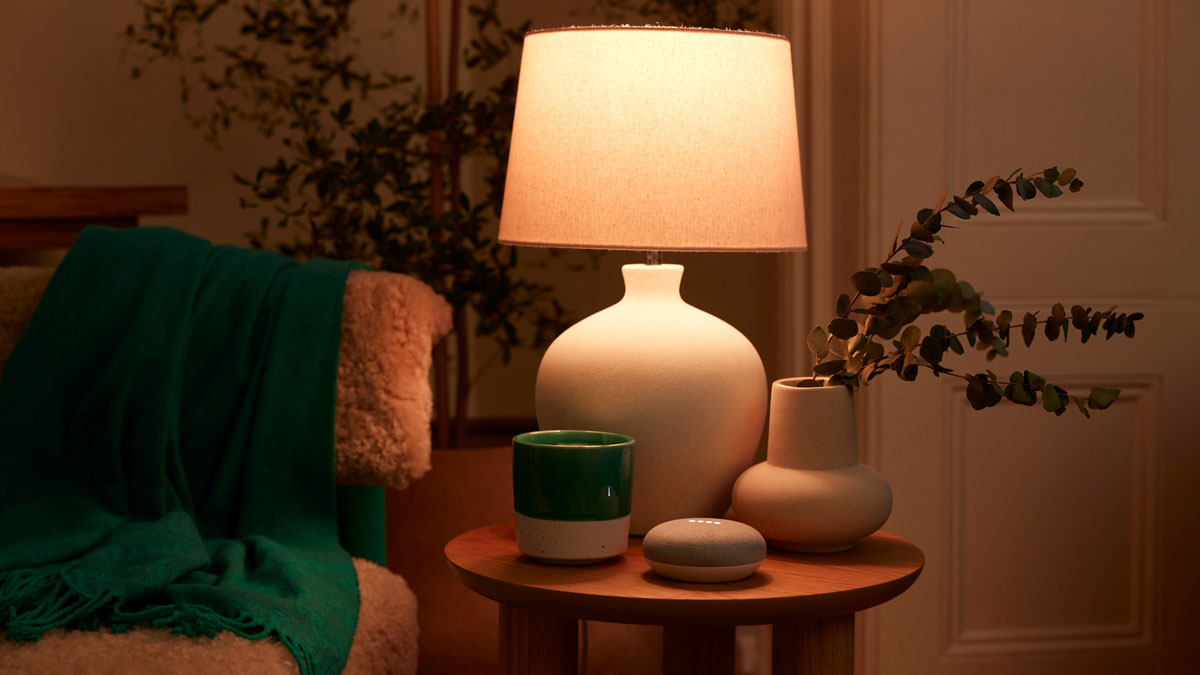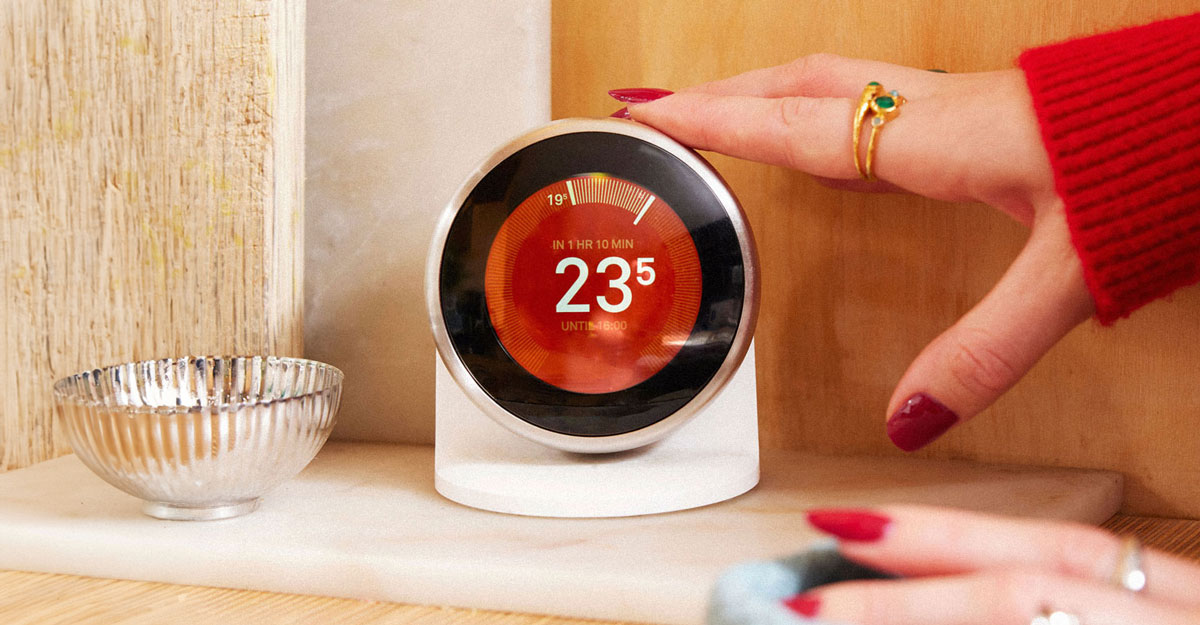Healthy home working – how to improve your wellbeing and feel energised in 2024

New Year’s resolutions are first thought to have been mentioned in a Boston local newspaper back in 1813. And while people have tried all sorts of cognitive tricks over the years to keep themselves on track, these days many of us are turning to tech to find the answer. And its role cannot be overstated.
But what tech are we talking about exactly? Surely not the 3am shopping channel ab belts with red lasers that promise to tone your six pack and melt fat while you’re relaxing on the sofa? Thankfully, no. Instead, we’re talking about the vast array of genuinely useful technology that can help create and sustain good habits, resulting in a fitter, healthier, and happier you.
And with so many people working from home, here’s just a few ways you can improve your environment – from better air quality to natural light and a cosier space that keeps you working at your best.

Smarter air systems
It’s natural to assume that the air in our homes is clean, but it’s very often not the case. Naturally undetectable pollutants can easily infiltrate our homes — anything from exhaust fumes from a nearby road, to sneeze-inducing pollen, cooking fumes and chemicals from household products can all worsen the quality of indoor air. In worse cases, this can lead to symptoms like headaches, congestion, and poor sleep. The latter is particularly bad, as sleep has been shown in countless studies to be of absolutely vital importance in maintaining a healthy immune system.
One item of tech that can help with this is, of course, the air purifier. The more advanced ones have built-in sensors that can detect all the aforementioned invisible pollutants, before ramping their power up or down accordingly, to help maintain a constantly healthy indoor air quality. Often, you’ll find that many offerings are Wi-Fi enabled, which lets you keep tabs on the air quality even when you’re away from home (useful for ensuring that family and pets are in a good environment while you’re away).
The same principle applies to the humidity levels. Too high or too low, and you could soon find yourself experiencing anything from congestion and coughing, to cold and flu-like symptoms. With so many homes suffering from damp (and with unavoidable things like having to hang up washing indoors), many British homes often suffer from high humidity. As with air purifiers, you can buy smart Wi-Fi enabled dehumidifiers to keep humidity levels safe and constant, while monitoring them remotely from your devices while you’re out and about.

Smarter lighting
Other tech that can drastically alter your working life in a positive way, is lighting. You’ve probably heard of Seasonal Affective Disorder, or SAD. Affecting one in three people in the UK, it commonly occurs when a lack of natural light in darker winter months leads to lethargy, low mood, food cravings, irritability, and more. This can obviously drastically affect one’s mental health, sleep, and diet, with all manner of negative effects that can spiral out of control.
Thankfully, you can get specially designed lamps and bulbs designed to recreate natural light in your home. Many of these are also Wi-Fi enabled, letting you easily control them via your phone, or even with your voice using smart assistants. Some models also let you schedule the light patterns to mimic those of real sunrises and sunsets in parts of the world where it’s not so dark and gloomy, literally bringing you peace of mind in the process.
And don’t forget your windows – smart blinds can open and close with a mere voice command for instant access to daylight, or blacking-out your room for a great night’s sleep or simply to avoid screen glare.
Smarter heating
Smart heating systems help you individually control the temperature in every room, ensuring that everyone is comfortable, while saving money in the process. And when working from home you will always feel cosy – and won’t need to wear your scarf on video calls either.
Most systems can be activated from your phone via an app – which is ideal if you’re stuck in a virtual meeting and feeling the cold. Likewise, with other people in your household, it’s easy for everyone to have different needs when it comes to temperature, so make sure you’re in control.

Smarter Wi-Fi
If you’ve got a home kitted out with lights, sensors, and devices to help improve your environment, that’s great — but if your network connection is constantly dropping out and devices keep going offline, you’re going to be stressed, frustrated, and in an even worse position than before.
Having a stable, high-performing connectivity experience offered by EE’s Smart Hub Plus will help ensure that you never have to worry about dropped connections and disconnected devices again. And this goes even further with its Wi-Fi Enhancer add-on that comes with a dedicated Work Mode. This gives your traffic priority whenever you need it – and is great for productivity apps like Teams or Zoom.
And when you want to relax with some down time, you won’t have to worry about being disconnected from online games either, thanks to turbo charging your gaming experience with geo-filtering and a ping-optimiser in the aptly named Game Mode.
To help keep a healthy work-life balance, enjoy great EE offers on the Calm app. Plus, save £20 a month on new, unlimited data mobile plans, when you choose EE Broadband. For more on powering your home working, visit ee.co.uk/work
Sign up for breaking news, reviews, opinion, top tech deals, and more.

Esat Dedezade is a freelance writer, journalist, and content creator. After six years as a staff writer and deputy features editor at Stuff, he left to pursue a new challenge at Microsoft, where he was the editor of their European news centre for three years.
Esat experience enabled him to write about and review consumer tech and lifestyle, in addition to corporate/agency copywriting, and thought leadership pieces for large companies.